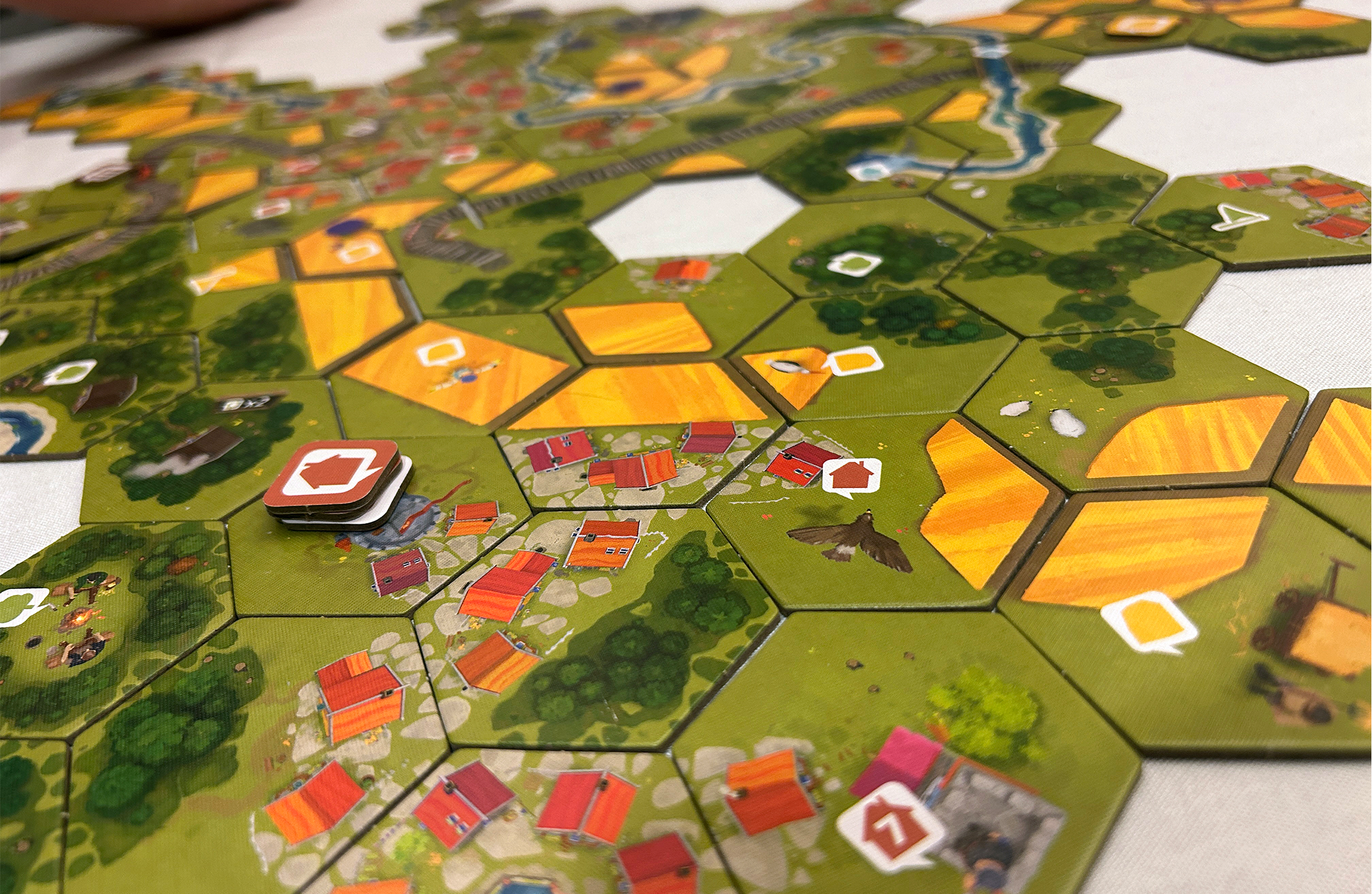Narrated by Randell Moore
When I’d heard that Dorfromantik had won the Spiel de Jahres last year, I was pretty surprised. I had played the video game — a tile laying game where you’re attempting to group similar regions together to meet size goals — of the same name. It’s a spatial puzzle that’s just difficult enough to be interesting, and for the video game it was enough to keep me playing for an afternoon or two. It was fine. While it made sense that an adaptation to a board game was certainly plausible, I couldn’t think of what they could do in that space to win the largest annual international board game design award. This past weekend at RadCon, I found out.
There are two stacks of tiles: Landscape Tiles and Task Tiles. Shuffle both, remove three Landscape Tiles randomly, and put these in stacks that are easily accessible to all players. Place Task Tokens next to these stacks face down separated by type. Now, you’re ready to start.
Pick someone to go first. As Dorfromantik is a cooperative game and you’ll be discussing all of the tile placements, the active player only really dictates the final say in a placement. For the first three tile placements, use tiles from the Task Tile stacks. Each of these will have a symbol representing one of the five types of terrain. Then, take a Task Token from the stack matching the Task Tile’s symbol and place it on that tile. This will let you know what size grouping you’ll need in order to complete that task.
Then play rotates to the next player and they do the same. Once there are three active tasks, the active player instead pulls their tile from the Landscape Tiles deck. If a task is completed, remove the Task Token and set it aside for game end scoring, then have the next player pull a tile from the Task Tiles so that there are always three tasks available.
Play rotates until all tiles from the Landscape Tiles deck have been played. Total up your score based on completed tasks, and that’s the game.
…Mostly.
Here’s where the next stage of enjoyment comes in: Dorfromantik comes with five boxes containing additional tiles, objective cards, and mechanisms that are unlocked during game play. As you play more and more games, there are more and more adjustments to puzzles that allow for different types of scoring, or new objectives, or different methods of ticking boxes off a long-term scoring sheet. The video game version has a similar method of progression, but because of the form of media, it doesn’t have nearly the same enjoyability (at least for me). For a board game, the dopamine pacing is ridiculously effective.
The components are great: tuckboxes, an effective insert for storage, beautifully illustrated tiles, and a simple method of reorganizing the games so that multiple groups of people can progress through the game at different rates over the same period of time without trouble.
Folks that know me and who’ve been to my events know that I typically don’t play much when I’m hosting events for TAG. I get other folks into games, teach people how to play stuff, wrangle groups together, but otherwise I tend to just sit back and keep to myself. I played almost 10 hours of Dorfromantik over this last RadCon weekend, and can’t wait until my own copy comes in so that I can start it all over again with Sara.
It’s casual and cooperative, works well for any player count, doesn’t suffer when folks need to come and go during a game (really, people can drop in and out at will), is almost entirely language agnostic (aside from one person who will need to understand the achievement system if you’re playing with it), is colorblind friendly, is enjoyable by all ages, and is an extremely satisfying game to play. If you’re looking for something on the lighter side with massively broad appeal, this is a must buy.
Designed by: Michael Palm, Lukas Zach
Player Count: 1–6
Playtime: 30–45
Time to Learn: 5 minutes
Complexity: 1.0
Replayability: 5/5
MSRP: $45
Written by Brendan Quinn, President of Tri-City Area Gaming. We’re out in the world again! Come play games with us at any of our regular monthly events.
All the links for Tri-City Area Gaming: tcag.carrd.co


